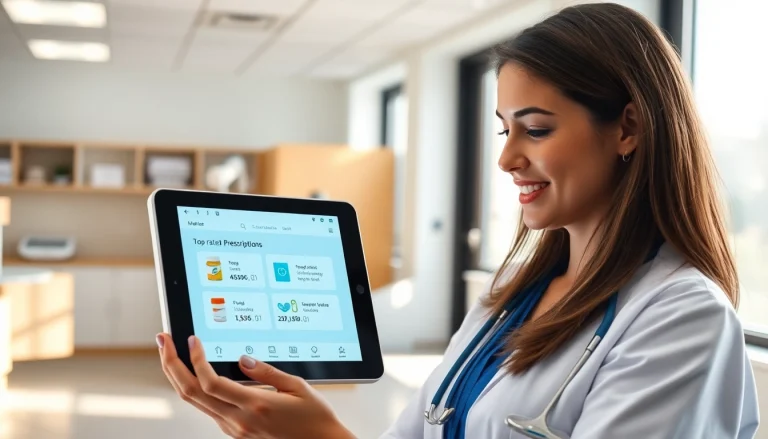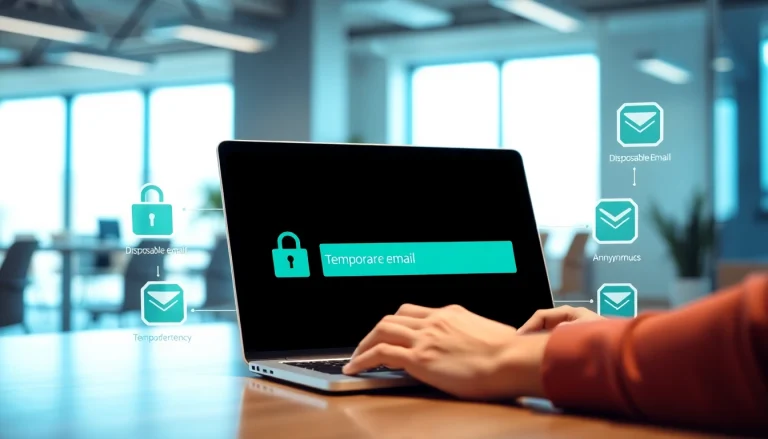Understanding E-Prescribing and Its Importance
E-prescribing, or electronic prescribing, is a transformative healthcare solution that allows healthcare providers to transmit prescriptions directly to pharmacies electronically. This method significantly reduces the chances of prescription errors associated with handwritten prescriptions and enhances the overall efficiency of healthcare delivery. By integrating features of eprescribing software into their practices, providers improve patient safety and streamline workflows.
What is E-Prescribing?
E-prescribing is the process by which healthcare providers send prescriptions electronically to a pharmacy. Rather than relying on paper prescriptions or telephone orders, e-prescribing allows for immediate transmission of prescriptions from a prescriber’s office to a pharmacy. This system not only enhances accuracy but also reduces wait times for patients at pharmacies, facilitating quicker access to necessary medications.
The History and Evolution of E-Prescribing Software
The evolution of e-prescribing can be traced back to the need for increased efficiency and reduced errors in prescription management. Historically, prescriptions were handwritten or communicated verbally, leading to significant bottlenecks and errors. The introduction of e-prescribing began in the late 1990s, fueled by the advancement of electronic health records (EHRs) and regulatory incentives like the Medicare Modernization Act, which urged the adoption of electronic prescriptions. These innovations paved the way for software that could streamline communication between prescribers and pharmacies, ultimately leading to the robust features available today.
Importance of Features of E-Prescribing Software in Healthcare
The features of e-prescribing software are crucial in enabling healthcare providers to make informed decisions, minimizing potential errors, and enhancing patient care. By adopting advanced e-prescribing solutions, healthcare settings can improve medication adherence, ensure timely renewals and refills, and facilitate better communication among healthcare members. Furthermore, e-prescribing plays a vital role in preventing prescription drug abuse by offering features such as real-time access to patient medication histories and drug interaction alerts.
Essential Features of E-Prescribing Software
Electronic Prescription Transmission
The core feature of e-prescribing software is the electronic transmission of prescriptions. This feature automates the process of sending prescriptions to pharmacies, drastically cutting down on errors associated with handwriting and verbal communication. It not only speeds up the dispensing process but also allows for immediate access to important patient medication information from anywhere, which is particularly useful in emergency situations.
Medication History and Management Tools
Access to comprehensive medication histories is essential for effective patient care. E-prescribing software provides healthcare providers with vital information about patients’ current and past medications, enabling them to make better-informed decisions. This historical context allows practitioners to avoid prescribing conflicting medications, adjust dosages based on past experiences, and ensure that patients are following through with their treatment regimens.
Drug Interaction Alerts and Notifications
One of the most critical features of e-prescribing software is its ability to alert healthcare providers about potential drug interactions. This feature analyzes the prescribed medications against a patient’s existing prescriptions and alerts providers to potentially harmful interactions. By preventing these adverse events, e-prescribing software greatly enhances patient safety and fosters trust between patients and their healthcare providers.
User Experience and Interface Design
Intuitive Dashboards and Navigation
For effective utilization of e-prescribing software, the user interface must be intuitive. This includes streamlined dashboards that present relevant information clearly and concisely, promoting ease of navigation. A well-designed interface minimizes the learning curve for new users, thus allowing healthcare providers to focus more on patient care rather than software operation.
The Role of Customizable User Settings
Customizable user settings play a significant role in tailoring the e-prescribing experience according to the preferences of individual practitioners. This feature allows users to adjust display settings, create templates for frequently prescribed medications, and set reminders for follow-ups. Customization not only improves user satisfaction but also enhances operational efficiency.
Mobile Access and Remote Capabilities
With the advancement of mobile technologies, e-prescribing software is increasingly expected to offer mobile access. This functionality enables healthcare providers to access patient prescriptions and medication histories remotely, facilitating care continuity even outside the clinical environment. Such flexibility enhances both provider productivity and patient satisfaction, as prescriptions can be processed more quickly.
Integrating E-Prescribing Software into Healthcare Systems
Best Practices for Implementation
Successfully implementing e-prescribing software requires meticulous planning and adherence to best practices. Key steps include setting clear objectives, selecting software that integrates well with existing systems, and collaborating with all stakeholders during the implementation phase. Moreover, testing the software thoroughly before full-scale implementation is crucial to identify potential issues and mitigate risks.
Training Staff on New Software
To maximize the benefits of e-prescribing software, thorough training for all staff members is essential. Training programs should cover not only basic software functionalities but also the potential impacts of e-prescribing on patient care and workflow. Regular workshops and refresher courses can enhance staff proficiency and confidence in using the software effectively.
Addressing Common Challenges in Integration
Integrating e-prescribing software can pose several challenges, including resistance to change among staff, technical difficulties, and concerns over data security. To tackle these issues, healthcare administrators should foster a culture of openness and encourage feedback, ensuring that staff feels supported during the transition. Additionally, involving IT professionals during implementation can help mitigate technical challenges and ensure a smooth integration process.
Evaluating Performance and Return on Investment
Metrics to Measure Success of Features
To evaluate the effectiveness of e-prescribing software, specific metrics should be established. Key Performance Indicators (KPIs) may include reductions in prescribing errors, increased medication adherence rates, and improvements in workflow efficiencies such as the average time taken to prescribe. Tracking these metrics over time can provide valuable insights into the software’s impact on patient care and operational efficiency.
Analyzing Patient Outcomes Post-Implementation
Analyzing patient outcomes after the implementation of e-prescribing software is vital to assess its overall effectiveness. Improved patient outcomes can be measured by examining metrics such as readmission rates, adherence to prescribed medications, and incidences of drug interactions. This analysis helps demonstrate the value that e-prescribing brings to clinical practice and can aid in securing ongoing support and funding for further enhancements.
Strategies for Continuous Improvement in E-Prescribing
Continuous improvement is essential in healthcare systems, and the same principle applies to e-prescribing software. Strategies such as soliciting regular feedback from users, conducting periodic reviews of software functionalities, and staying updated with technological advancements can keep the software relevant and effective. Engaging in continuous training initiatives and responding to evolving patient needs will help healthcare organizations maximize the benefits of e-prescribing.








